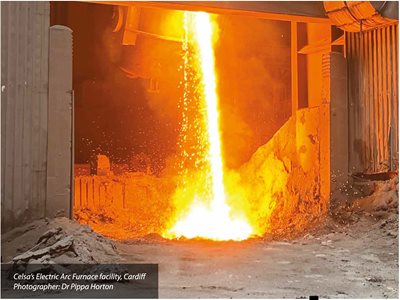Cement from concrete demolition aste
Cambridge Electric Cement was developed by Cambridge University based engineers Dr Cyrille Dunant, Dr Pippa Horton and Professor Julian Allwood.

This new manufacturing technique combines steel and cement recycling processes and has been patented by three engineers based at Cambridge University. Their small scale trials have demonstrated that that the chemical composition of the resultant clinker is virtually identical to the clinker used to create Portland Cement.
The new cement, called Cambridge Electric Cement, could therefore be made in a virtuous recycling loop, and using renewable energy for the manufacture, could eliminate the emissions almost entirely. The process also saves raw materials and reduces the emissions required in making the lime-flux for steel recycling.
Innovate UK funding has been awarded to trial the product at industry scale. This Cement 2 Zero project will investigate both the technical and commercial aspects of upscaling Cambridge Electric Cement production to produce 20 tonnes of zero-emissions cement.
The project is supported by the Materials Processing Institute, The University of Cambridge and key supply chain partners: Tarmac, CELSA, Balfour Beatty, Atkins, Brewster Brothers and Day Aggregates.